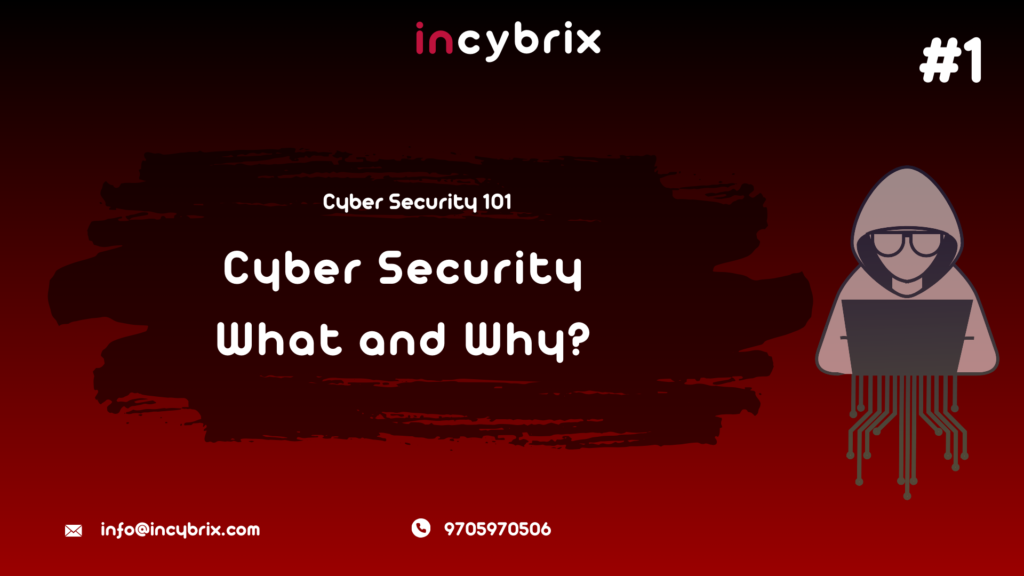Living in a world where technology nearly touches every part of our lives, security in this digital environment has become a top priority. And that is where cybersecurity comes into play. But what is cybersecurity, and why is it so important? Let’s break it down.

Table of Contents
What is Cyber Security?
Cyber Security is about safeguarding systems, networks, programs, devices, and data against unauthorized digital access or other forms of malicious digital attacks. It is the generic term for technologies, processes, and controls put in place to protect confidentiality, integrity, and availability in a connected world, minimizing risks to individuals, organizations, and governments worldwide.
Why Would Anyone Want to Attack me or my Business?
Nobody is above the possibility of cyberattacks, whether that business is a small one or a large company. Most motives that drive cyberattacks in business are financial gains, data theft, and malicious intent. The attackers may even target your business to steal sensitive information such as customer data or intellectual property, sell them on dark web, or use them in identity theft. The competitors may want to disrupt your operations; some of them may also create problems from the inside. Sometimes such attacks are opportunistic; hackers attack systems that are poorly secured not because of who you are, but just because they can. Thirdly, politically motivated groups or hacktivists may attack if your business is identified with causes they disapprove of. Living in a world that is highly connected, no individual or organization is safe from the lurking threats in cyberspace, and cybersecurity ranks high on every priority list.
What threats might I face?
This is an entirely digital landscape where every single person or business is prone to a number of cyber threats. These range from phishing-trying to get your sensitive information by deceiving you-to malware that may contaminate your devices, steal critical data, or disrupt systems. Ransomware can encrypt your data and demand payment in exchange for decrypting your data.
DoS overwhelms your systems with resources, rendering them unavailable. Insider threats-both intentional and accidental-can also be pretty extreme. Other common ones are BEC Business Email Compromise, where fraudsters manipulate corporate e-mail accounts, and data breach-theft of confidential data. All this requires creating awareness for a person or business entity in order to safeguard their digital assets.
Lets look at some real world cyber attacks,
- Cyber Heist at NIC Asia Bank
NIC Asia Bank became the victim of the biggest-ever cyber heist in Nepal, with cybercriminals reportedly fleeing off with around Rs460 million. The money was stolen by “issuing around 31 fake instructions” via SWIFT, the global interbank payment system. Read more..
- Government websites Facing Cyber attacks
According to the National Information Technology Centre, the websites have gone offline due to distributed denial of service (DDoS) attacks which are a subclass of denial of service (DoS) attacks. A DDoS attack involves multiple connected online devices, collectively known as a botnet, which are used to overwhelm a target website with fake traffic. Read more..
- Social Engineering and Phishing attacks
Every day, attackers try to lure individuals to gain their trust and credentials. You might have observed or heard news where threat actors convince people to share their OTPs, eventually taking over their accounts.
What is the role of Cyber Security?
It is the role of cybersecurity to protect individuals, businesses, and systems from the wide range of digital threats they face. That is accomplished through providing mechanisms of securing sensitive information against intrusion and unauthorized access while ensuring integrity, confidentiality, and availability of information. Cybersecurity identifies possible vulnerabilities, mitigates them, detects, and responds to a possible attack in order to ensure the systems remain resilient for the future.
It safeguards against malware, phishing, ransomware, and insider threats, among many other cyber threats, to manage the risks involved and secure the digital assets that run your business and protect personal and organizational data.
Cybersecurity nowadays is one of the prime concerns, as threats loom ever larger than ever. Understanding common threats and what cybersecurity does to help you are your first steps in securing your personal and professional digital lives.
Did we answer our question? Did we miss something? Address us on the comments or contact us
In the next few posts, we will be deep-diving into more specific topics, reviewing some of the practical tools available to further develop this foundation in cybersecurity.
Stay tuned for Day 2! Until then here are some interesting websites to visit